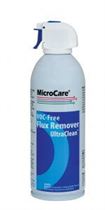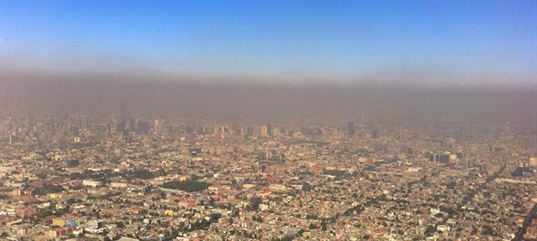What Does It Mean to Be 'VOC Exempt'? Is the Chemical Still a VOC?
As noted elsewhere in this web site, a VOC is an organic chemical (containing carbon) which can evaporate and remain in the atmosphere. While these materials float in the atmosphere the VOCs react with sunlight and can contribute to smog in cities. However, to be a harmful VOC the organics must have a significant atmospheric life span (measured in months) and be reactive in sunlight, because it is the reaction with sunlight that breaks the VOCs down into the smog.
Low-VOC Choices from MicroCare
MicroCare engineers have reformulated many of the cleaning products for reduced VOC levels. Here’s just a short list, as some examples:
- The VOC-Free Flux Remover – UltraClean™ (#MCC-VOC) contains no VOCs and is specifically engineered for those markets with tight VOC restrictions, such as California, Texas and parts of the EU. In terms of performance, it is a highly effective circuit cleaner, offering superior results on “no-clean” fluxes and very good cleaning on rosin and lead-free fluxes as well. This product also easily removes silicone conformal coatings and silicone glues. It’s an excellent choice for defluxing circuit boards during rework and repair. Importantly, this fast-drying fluid is the strongest cleaner on the market in its class.
- The VOC value for No-Clean Flux Remover – VeriClean™ (#MCC-DC1) is 87 grams per liter.
- The No-Clean Flux Remover Pen is 87 grams per liter.
- The Polar Flux Remover is 72 grams per liter.
- The RMA Flux Remover Cleaning Pen is 72 grams per liter.
- The Universal Flux Remover (#MCC-UFR10A) is 59 grams per liter. Medium-strength, fast-drying, this product is available anywhere in the world without restriction.
- The Universal Contact Cleaner (#MCC-CCH10A) is 59 grams per liter.
- The Reflow Oven Cleaner (#MCC-ROC) is 50 grams per liter.
- Some of the slower-drying solvents are borderline VOCs as defined by their slow evaporation rate. This means they may not be regulated in some communities. The Citrus-based Flux Remover (#MCC-EC7M) and the TidyPen2™ (#MCC-P02) all are 100% slow-drying organics, so they may (or may not) be regulated as VOCs in different communities.
All MicroCare products have their non-exempt organic content listed on their product spec sheet, the SDS sheet, and on the can label, so you can always tell the VOC impact of the different selections. However, every community has different rules, so the savvy engineer will be careful to check their regulations before making a final selection. For example, California’s CARB rules regulate a chemical by both the ingredients AND the application, so an acceptable solvent for cleaning electronics may not be an acceptable choice for washing windows. Check the rules in your area.

The VOC-Free Flux Remover is engineered for regions where local air quality rules are strict

The air quality in cities can be very poor, mostly due to VOC emissions in the atmosphere. This photo is Mexico City in 2010.
